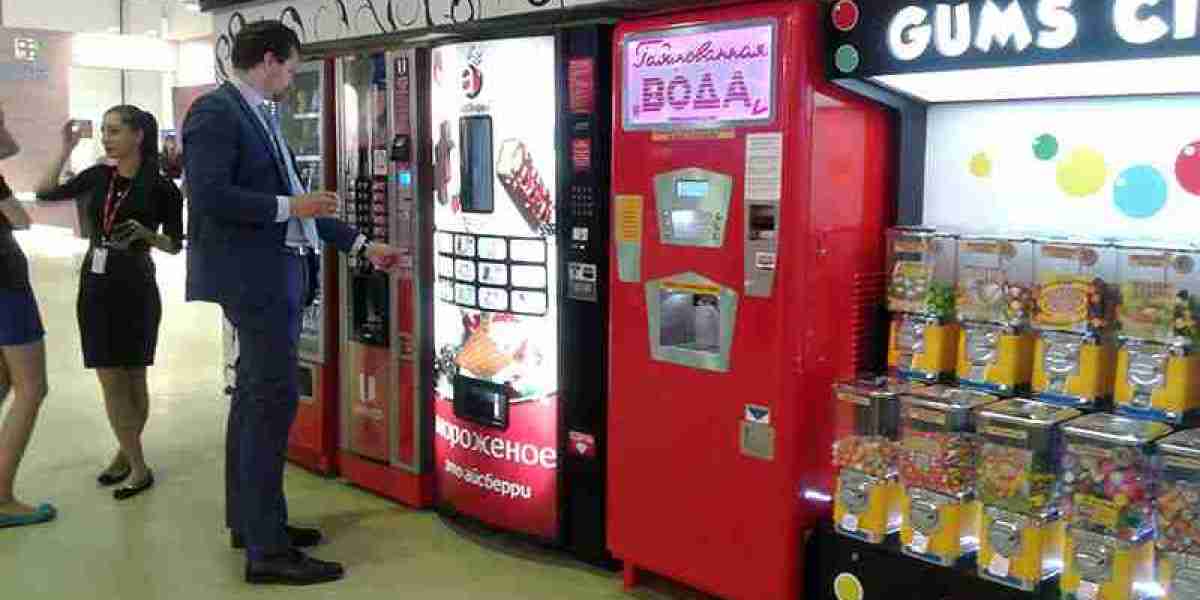The vending machine industry, a staple in convenience retail, has evolved significantly over the past decade. Gone are the days of simple machines dispensing snacks and sodas with a few coins. Enter the world of intelligent vending machines (IVMs), a revolutionary step forward in automation and technology. These machines are equipped with advanced features like cashless payments, AI-driven inventory management, and personalized customer experiences. As a result, the intelligent vending machines market is experiencing rapid growth, driven by several key factors that are shaping the future of this industry.
1. Technological Advancements
One of the primary drivers of the intelligent vending machines market is the continual advancement of technology. Modern vending machines now include features such as touchless interfaces, facial recognition, and Internet of Things (IoT) connectivity. IoT-enabled vending machines, for instance, can monitor inventory levels in real-time, automatically triggering restocking requests when products run low. These machines are not only more efficient but also provide an enhanced customer experience by offering faster transactions, greater product variety, and more engaging interfaces.
Moreover, artificial intelligence (AI) is revolutionizing the way vending machines interact with consumers. AI-powered systems can analyze purchasing patterns, track customer preferences, and even suggest products based on previous buys or demographic data. This level of personalization makes the experience more appealing to consumers and encourages repeat visits. As these technologies continue to improve and become more accessible, the demand for intelligent vending machines is poised to grow even further.
2. Consumer Demand for Convenience and Personalization
Consumers today expect convenience, efficiency, and personalized experiences in every aspect of their lives—and vending machines are no exception. The traditional vending machines that only offered a limited selection of snacks are no longer sufficient for today’s on-the-go consumer. Intelligent vending machines allow consumers to access a much wider array of products, from healthy snacks and beverages to electronics and beauty products.
Additionally, the ability to pay through cashless systems such as mobile apps, credit cards, or even cryptocurrencies is attracting consumers who are used to seamless and quick transactions. The rise of mobile wallets and digital payment methods has accelerated the transition from cash-based vending machines to more sophisticated, intelligent versions.
Beyond just offering a wider variety of products, intelligent vending machines can also offer tailored promotions and discounts. Machine learning algorithms can be used to analyze data and send personalized offers or discounts to users through connected apps, further increasing consumer satisfaction and engagement. The combination of convenience and personalization is undoubtedly driving the demand for intelligent vending machines.
3. Rise of Contactless and Hygiene Standards
The global COVID-19 pandemic has changed consumer behavior in profound ways. Hygiene and safety have become top priorities, and consumers are more cautious about touching public surfaces. Intelligent vending machines that feature touchless technology, such as QR codes or mobile app-based interactions, address this concern by allowing customers to make selections and payments without physically interacting with the machine.
Moreover, many intelligent vending machines are equipped with antimicrobial surfaces or UV sterilization features, further assuring customers that their products are being dispensed from a hygienic environment. These advancements have become a key selling point, particularly in high-traffic areas like airports, malls, and office buildings where cleanliness is paramount.
4. Expansion of Location and Use Cases
The intelligent vending machine market is expanding beyond the traditional locations where vending machines have been found. With their ability to offer a wide variety of products, these machines are popping up in unconventional places such as airports, hotels, hospitals, gyms, and even college campuses. Their versatility allows businesses to place them in locations where human staff may not be available, providing consumers with access to essential goods 24/7.
For instance, some machines are now offering fresh food, electronics, and even clothing items. As the variety of products expands, so does the market for intelligent vending machines. Additionally, businesses are realizing the benefit of placing these machines in areas with high foot traffic, creating a new avenue for increased sales and customer interaction.
5. Data-Driven Insights for Operators
Intelligent vending machines don’t just benefit consumers they offer significant advantages to operators as well. The wealth of data generated by these machines provides valuable insights into consumer behavior, product popularity, and sales trends. Operators can use this information to optimize product offerings, adjust pricing strategies, and predict demand, ultimately improving profitability.
Data-driven analytics also support efficient inventory management. Real-time monitoring of stock levels allows operators to better forecast when a restock is necessary, reducing the likelihood of out-of-stock situations. Furthermore, predictive maintenance powered by AI can alert operators to any malfunctions, reducing downtime and ensuring a smooth customer experience.
Conclusion
The intelligent vending machine market is evolving rapidly, driven by technological advancements, growing consumer demand for convenience and personalization, the rise of contactless and hygiene standards, the expansion of locations and use cases, and the increasing value of data-driven insights for operators. These factors are reshaping the traditional vending machine landscape and positioning intelligent vending machines as a critical element of the future of retail. As the market continues to grow, we can expect even more innovative features to emerge, further revolutionizing the way we interact with vending technology.




